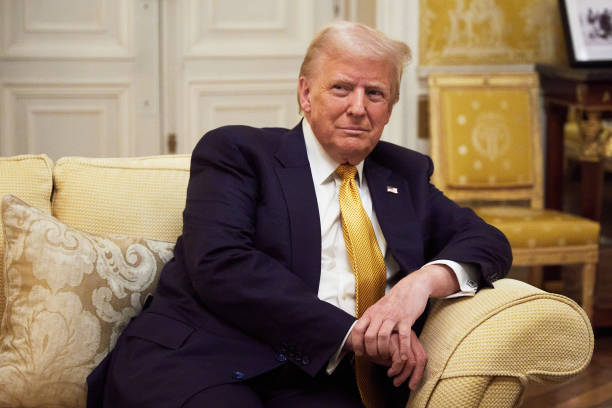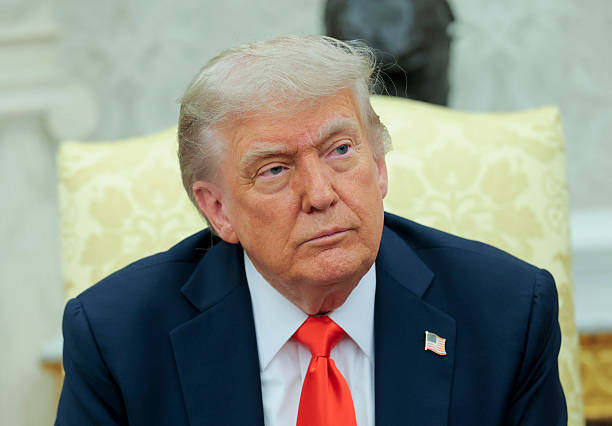Trump Signs Trade Letters to 12 Countries Before Tariff Deadline

In a bold and controversial move that’s once again making headlines worldwide, former U.S. President Donald Trump has signed and dispatched trade letters to 12 key countries just days before a major tariff deadline. The message? Crystal clear — “Take it or leave it.” This ultimatum, issued without room for negotiation, outlines Trump’s firm demands for revised trade agreements that favor American industries, protect domestic jobs, and counter what he claims are years of unfair trade practices by foreign partners. The letters reportedly cover a range of trade issues, from increased tariffs on select imports to stricter quotas and anti-dumping measures, all designed to push America’s trading partners into economic compliance. The implications of this move are far-reaching: international allies are expressing concern, economists are warning of potential trade disruptions, and global markets are reacting with uncertainty. Yet for Trump and his supporters, this is a reaffirmation of his “America First” doctrine — a strategy built on toughness, self-reliance, and confronting global trade imbalances head-on. As the tariff deadline draws closer, the world is watching with anticipation — will these 12 nations comply, or will this trigger the next wave of global trade conflict?

Trump’s Trade Strategy: America First 2.0?
Trump’s “America First” trade policy was a defining element of his first term. He withdrew from multinational agreements, imposed billions in tariffs, and frequently targeted China, Mexico, and the EU with harsh trade measures.
This latest move is being seen by many as a preview of his potential second-term strategy, should he return to the White House. It signals that Trump intends to reassert aggressive trade policies that prioritize U.S. job creation, manufacturing revival, and domestic supply chains — even at the cost of global cooperation.
Global Reaction: Tension on the Rise
Reactions from the international community have been mixed. Some U.S. allies are alarmed by the inflexibility of the proposal and the potential disruption to long-standing economic ties. Others view it as a negotiation tactic — extreme in tone, but not necessarily final in practice.
Financial markets have responded with caution. Global indices dipped slightly amid fears of an impending trade war. Economists warn that if even a handful of nations reject the proposals, retaliatory measures could lead to supply chain disruptions, higher consumer prices, and a global trade slowdown.

What It Means for the U.S. Economy
For Trump supporters and protectionist advocates, this move represents a much-needed correction to years of “unfair” trade deals. They argue it’s a way to rebalance the scales and force other nations to respect U.S. economic power.
Critics, however, argue that such a hardline tactic could hurt American businesses, particularly those dependent on global exports and imports. Sectors like agriculture, technology, and automotive could feel the pinch if trade partners retaliate.
2025 and Beyond: Will This Strategy Work?
Whether Trump’s trade ultimatum leads to better deals or backfires remains to be seen. But one thing is clear: his willingness to use tariffs as leverage and to negotiate through confrontation rather than diplomacy is back at the center of the conversation.
As the tariff deadline nears, all eyes will be on how the 12 nations respond — and whether Trump’s high-stakes gamble will yield results or trigger economic retaliation.
Final Thoughts
Donald Trump’s latest trade move is more than just political theater — it’s a signal of the aggressive economic stance he’s prepared to take if he regains the presidency. By issuing non-negotiable trade letters to 12 nations, he’s reigniting debates around nationalism, protectionism, and the global balance of power. While some see this as a necessary correction to decades of uneven trade, others fear it could isolate the U.S. and spark retaliatory measures that hurt both businesses and consumers. As the tariff deadline approaches, the world stands at a crossroads — one that could either lead to renewed trade talks under pressure or a dangerous escalation into economic confrontation. What remains certain is that Trump’s “take it or leave it” approach has reignited global trade tensions and made clear that his vision for America’s future will not play by the old rules.







